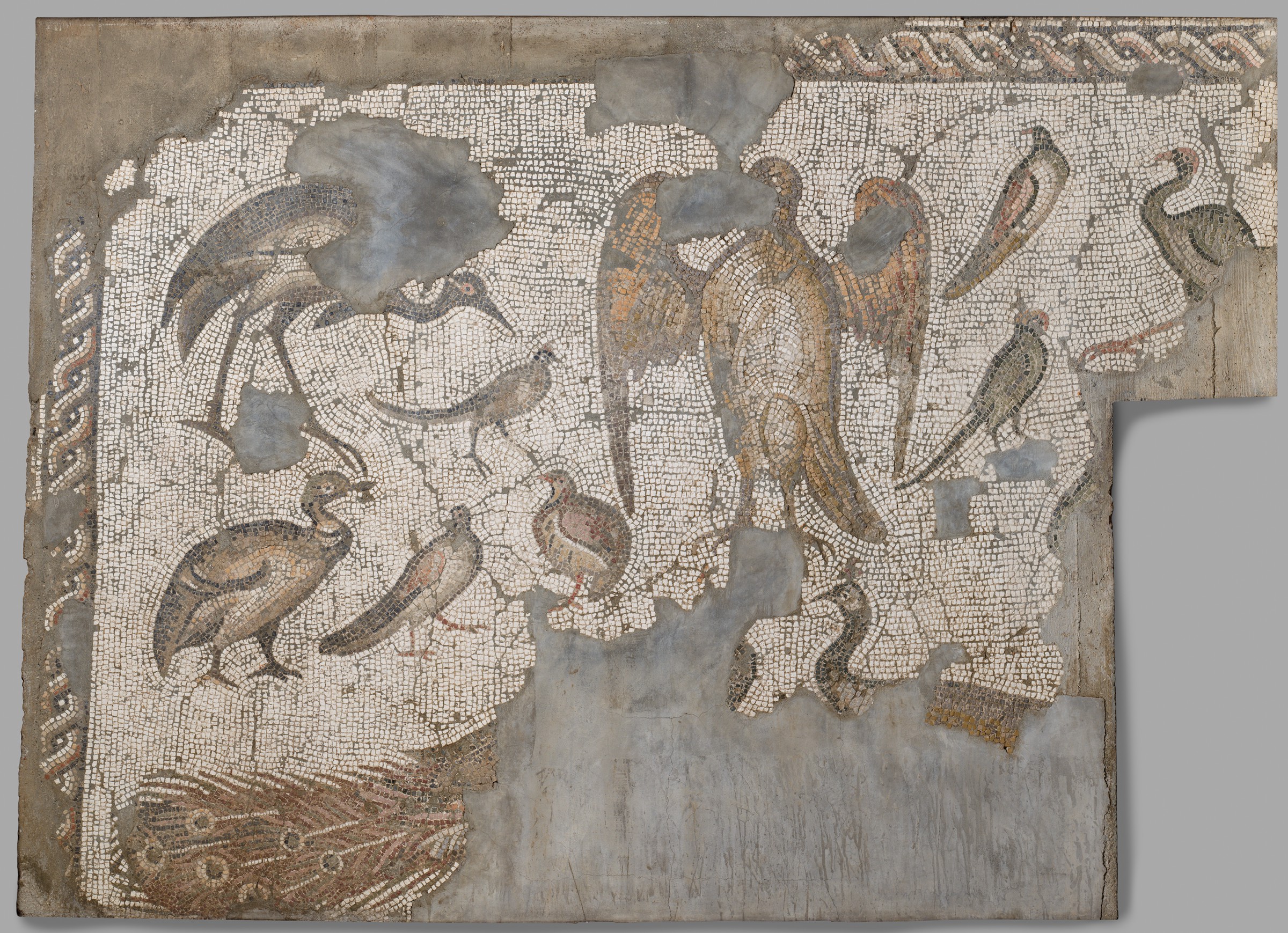1551-1558 and 1587: Conrad Gesner’s History of the Animals published [33]

Art Piece: Mosaic Pavement with Birds, from Feleet Village Building, Roman, 4th-5th Century CE [157]
Paper: Review: Animal Taxonomy: Theory and Practice [165]
Though trained as a doctor for many years, Conrad Gesner instead became very interested in the natural world, specifically fascinated by animals [32]. He eventually published his magnum opus, the multi-volume History of Animals, which essentially acted as the first encyclopedic accumulation of knowledge about the animals which were present during Gesner’s time. In terms of the specific volumes [73], “the first volume [was] on four-footed beasts, the second volume on egg-laying quadrupeds, the third volume on birds, the fourth on aquatic animals, and the last volume that was published after [Gesner’s] death on serpents.” This work was significant, and one of the first of its kind, giving people insight into the huge variety of animals that existed — in other words, this work represented a paradigm shift in the way people regarded animals and their histories. This attempt to list animals by Gesner seems very similar to actual taxonomy, and although Gesner’s work was not as taxonomically-accurate as someone like Carl Linnaeus [2], who is often considered the “father of modern taxonomy,” Gesner’s work still exemplifies determination to shift the scientific paradigm towards a more empirical-leaning future, one where encyclopedic texts abundant with important information can give people better insight into the complicated mechanics of the world around them. An art piece [157] that highlights many of Gesner’s ideas is the one above, which is a mosaic depicting many different birds. This artwork shows the diversity of animals, particularly birds, a diversity which can also be applied to different animals as well. In other words, the diversity of the birds in the mosaic is reminiscent of the diversity and huge variation of species that Gesner showcases in his magnum opus (though the scientific concept of “species” was not totally understood at the time). The scientific paper linked above [165] also demonstrates many of Gesner’s ideas — the paper discusses animal taxonomy in theory and practice, and one of the earliest and most comprehensive taxonomy attempts was that of Gesner’s. Though Gesner may not have been entirely accurate, many of his ideas allowed others later [117] in time to also try their own hands at taxonomy, until we eventually got to the point of modern, science and genetics based taxonomic methods. All of this exemplifies that a paradigm shift need not be entirely, 100% accurate — though we now know that Gesner’s history of animals is not entirely correct, during his time, he was able to spark new conversations about science and the classification of the natural world during his time.